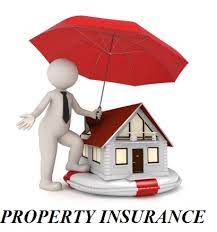What is insurance for your property?
Property insurance is a broad term for several policies that protect the property or property owners from liability. Property insurance pays the owner or renter of a building and its contents if damaged or stolen. It also pays out money to someone hurt on the property and who is not the owner or renter.

Homeowners, renters, flood, and earthquake insurance are all types of property insurance. A policy covers most personal property for a homeowner or renter. The only thing that isn’t covered is expensive and high-value personal property. This is usually covered by buying an add-on to the policy called a “rider.” If there’s a claim, the property insurance will either pay the policyholder the actual cost of the damage or the cost to fix the problem with new parts.
ALSO READ: Term life insurance – Complete Guide as of November 2022
What happens with property insurance
Property insurance usually covers certain weather-related dangers, such as damage from fire, smoke, wind, hail, the weight of snow and ice, lightning, and more. Vandalism and theft are also covered by property insurance, which protects both the building and its contents. Property insurance also covers liability if someone who isn’t the owner or renter gets hurt on the property and decides to sue.
Most property insurance policies don’t cover damage caused by tsunamis, floods, backed-up drains and sewers, seeping groundwater, standing water, or other water sources. Mould damage and earthquake damage are usually not covered. Also, most policies won’t cover things like nuclear disasters, acts of war, or terrorism.
How do Figure Out Property Insurance
There are three kinds of property insurance coverage: replacement cost, actual cash value, and extended replacement cost.
Replacement cost is the amount it would cost to fix or replace something of the same or similar value. The coverage is based on the cost to replace an item, not its cash value.
- Actual cash value coverage pays the owner or renter the cost to replace the item minus the amount it has lost in value. If the item you lost was ten years old, you get the value of a 10-year-old item, not a new one.
- If the cost of building has gone up, extended replacement costs will pay more than the coverage limit.
- However, this usually won’t be more than 25% of the coverage limit. When you buy insurance, the limit is the most money the insurance company will pay out if something bad happens.
